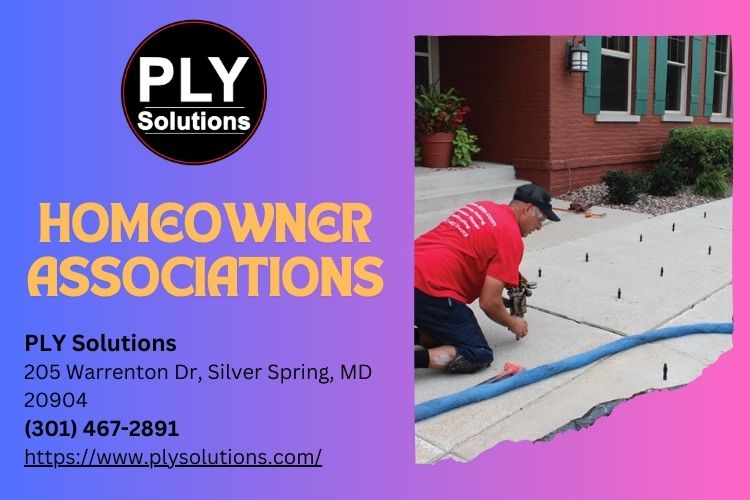Introduction
When you think about boosting your home's value, what comes to mind? Perhaps a fresh coat of paint or a brand-new kitchen? While those upgrades certainly play a role, they might not address underlying structural issues that can affect your home's worth significantly. One crucial yet often overlooked aspect is the condition of your foundation. In particular, slab leveling is an essential service for homeowners in St. Louis Park, MN. This article delves into how slab leveling can enhance your home's value and why it’s an investment worth considering.

What is Slab Leveling?
Slab leveling, also known as slab jacking, is a foundational repair technique used to elevate and stabilize concrete slabs that have settled unevenly over time. This process addresses issues caused by soil erosion, water damage, or natural settling of the earth beneath the foundation.
Why Do Homes Need Slab Leveling?
As homes age, various factors like moisture intrusion or poor drainage can lead to shifting foundations. Uneven slabs can result in:
- Cracks in walls and floors Misaligned doors and windows Compromised structural integrity
Ignoring these signs can lead to more significant problems down the road.
How Does Slab Leveling Work?
The slab leveling process usually involves injecting a specialized foam material or hydraulic cement underneath the sunken slab. This material expands and fills voids in the soil beneath, lifting the concrete back into its original position.
Step-by-Step Process of Slab Jacking Services:
Assessment: Professionals assess the existing damage. Preparation: They prepare the area by drilling small holes into the concrete. Injection: The leveling material is injected under the slab. Monitoring: Technicians monitor for proper elevation. Finishing Touches: Holes are patched up once leveling is complete.Signs Your Home Might Need Slab Leveling
Recognizing early signs of foundation problems can prevent costly repairs later on. Here are some indicators that slab leveling may be necessary:
Visible Cracks
Cracks in walls or floors are often one of the first signs homeowners notice.
Uneven Floors
If you find yourself walking with a slight tilt or noticing gaps between floorboards, it's time to call for slab jacking services.
Doors and Windows Not Closing Properly
Difficulty closing doors and windows could indicate shifts in your home's structure.
The Benefits of Slab Leveling for Home Value
Investing in slab leveling offers several advantages, particularly when it comes to enhancing your home's market value.
Improved Structural Integrity
A stable foundation means fewer worries about future repairs or safety hazards.
Boosted Curb Appeal
Leveling your home’s foundation can improve its overall appearance by eliminating unsightly cracks and misaligned features.
Increased Longevity of Other Home Improvements
A sound foundation ensures that other renovations—like flooring or cabinetry—remain intact for longer periods without risk of damage.
How Slab Leveling Can Improve Your Home’s Value in St. Louis Park, MN
In St. Louis Park specifically, where homes may vary significantly in age and condition, addressing foundational issues through slab leveling becomes even more critical.
Maintaining property values requires proactive measures against deterioration; thus investing in slab jacking services not only preserves but potentially enhances market appeal when selling your home.
Cost Considerations for Slab Leveling Services
Many homeowners hesitate to invest due to perceived costs associated with foundational repairs; however, understanding these costs can provide clarity on potential returns on investment (ROI).
Factors Influencing Cost:
- Size of area needing repair Severity of damage Accessibility issues
| Factor | Description | Estimated Cost | |--------|-------------|----------------| | Small Area | Minor cracks requiring minimal injections | $500 - $1,000 | | Moderate Damage | Several areas needing attention | $1,000 - $3,000 | | Extensive Damage | Major repairs needed across multiple slabs | $3,000 - $6,000 |
Is It Worth It?
Absolutely! The cost incurred now will likely pale compared to potential losses experienced if foundational problems worsen over time.
Choosing the Right Slab Jacking Services Provider
Selecting a reputable contractor is crucial for successful results with any home improvement project—including slab leveling.
Key Factors to Consider:
- Experience with local soil conditions Positive customer reviews Warranty options
DIY vs Professional Services: What’s Best?
Many homeowners wonder if they can handle slab leveling themselves versus hiring professionals. While DIY methods exist (like using polymer foam), they often lack effectiveness compared to professional-grade solutions.

Pros & Cons Table: DIY vs Professional Services
| Aspect | DIY | Professional Services | |---------------------|-----------------------------------|-----------------------------------------| | Cost | Lower upfront costs | Higher upfront costs | | Time | Time-consuming | Quick and efficient | | Effectiveness | Often less effective | Proven techniques | | Safety | Riskier without proper knowledge | Experienced professionals ensure safety |
FAQs About Slab Leveling
What is the average lifespan of repair after slab jacking?
The average lifespan varies but can last anywhere from 5 to 20 years depending on environmental factors and maintenance practices.
How long does it take to complete a slab leveling job?
Most jobs take between 2-4 hours depending on severity but larger projects may require more time.
Is there a warranty available for slab jacking services?
Many reputable contractors offer warranties ranging from 1 year up to lifetime guarantees based on their work quality and materials used.
Can I stay at home during the slab leveling process?
Yes! Most processes are relatively non-invasive and allow homeowners to remain present while work occurs.
Does insurance typically cover foundation repairs?
Coverage varies by policy; contacting your insurance provider directly will clarify specifics related to your situation!
li20/ol2/header1header1/main1section1section1/main1/##